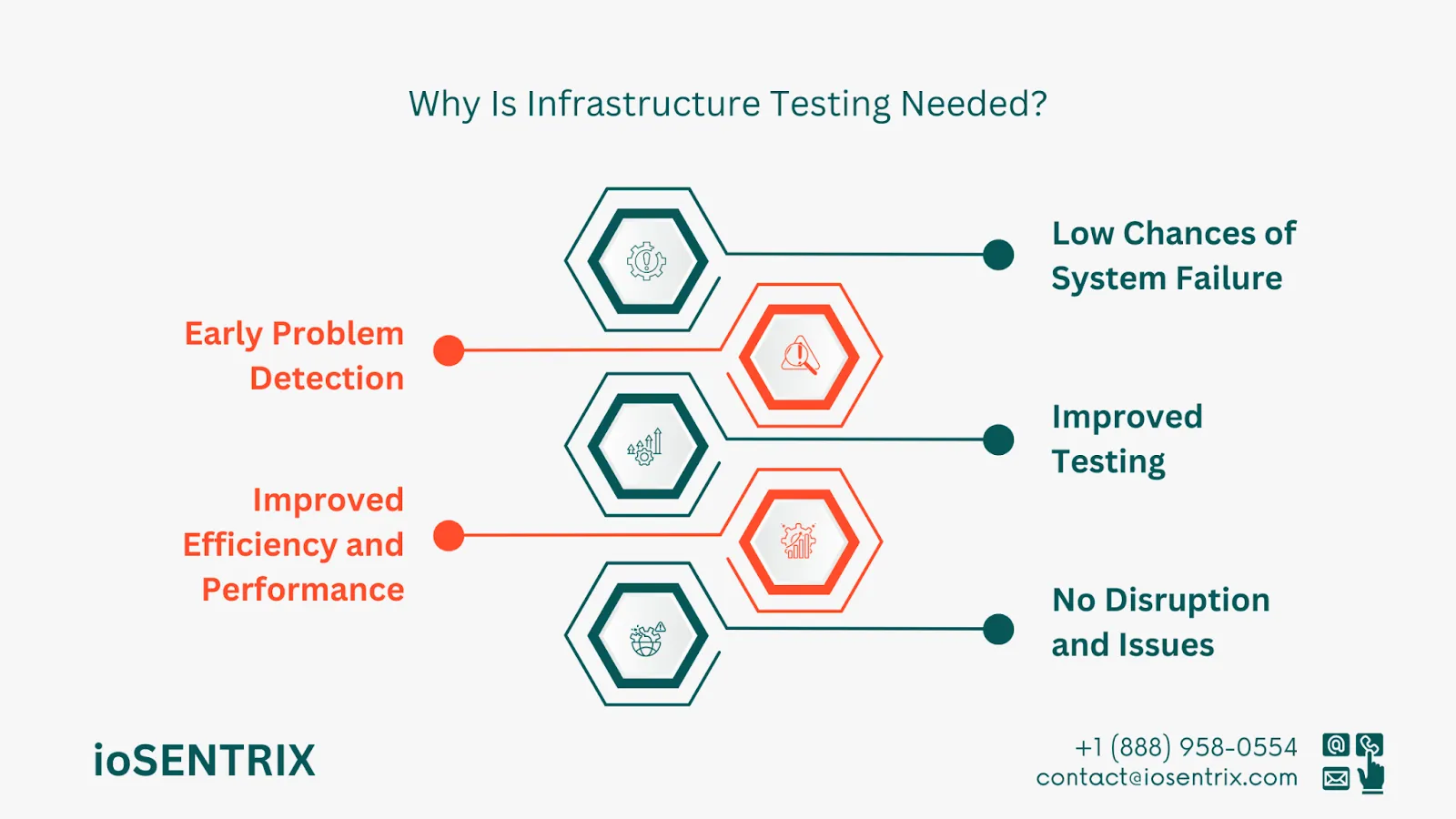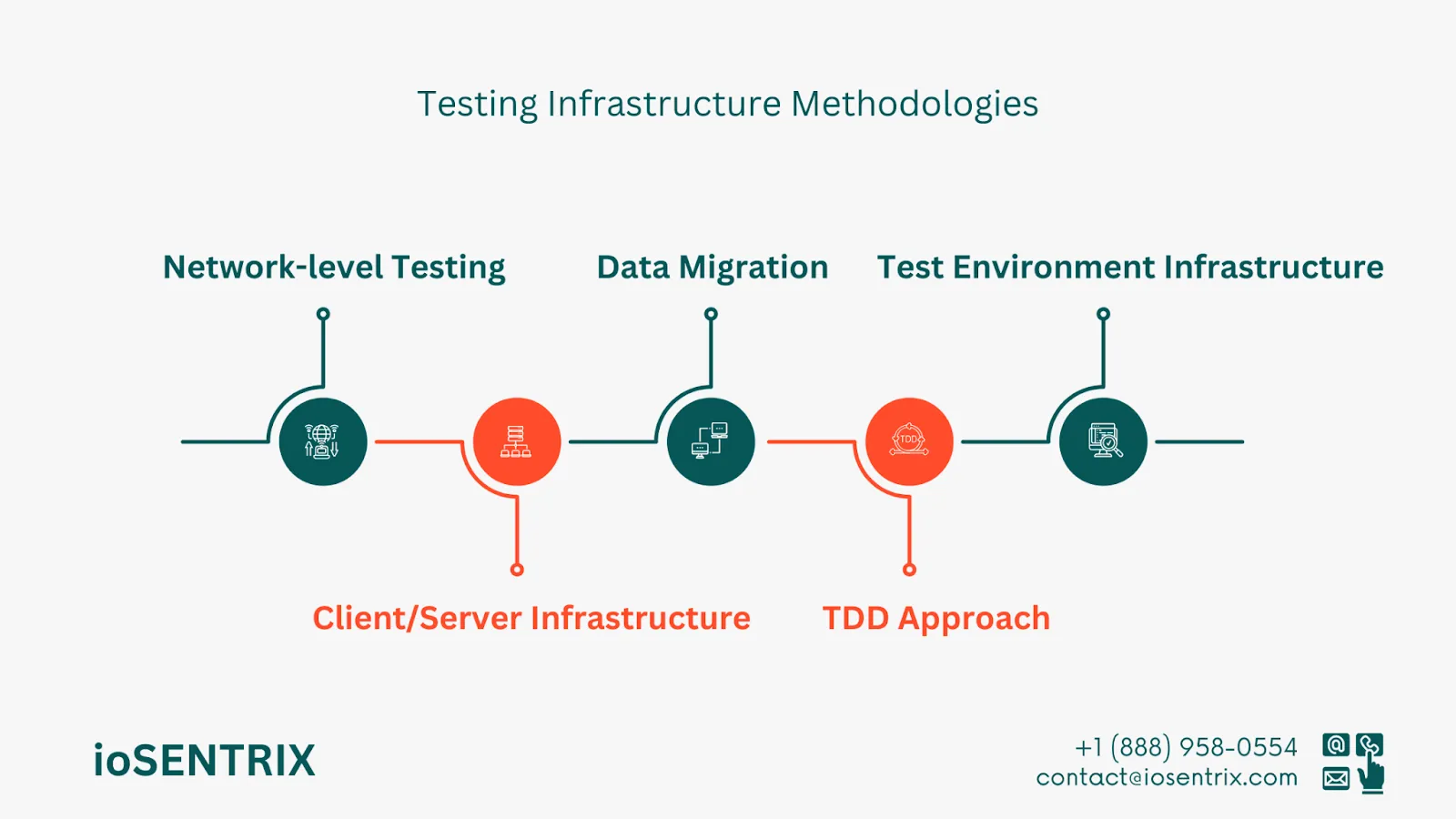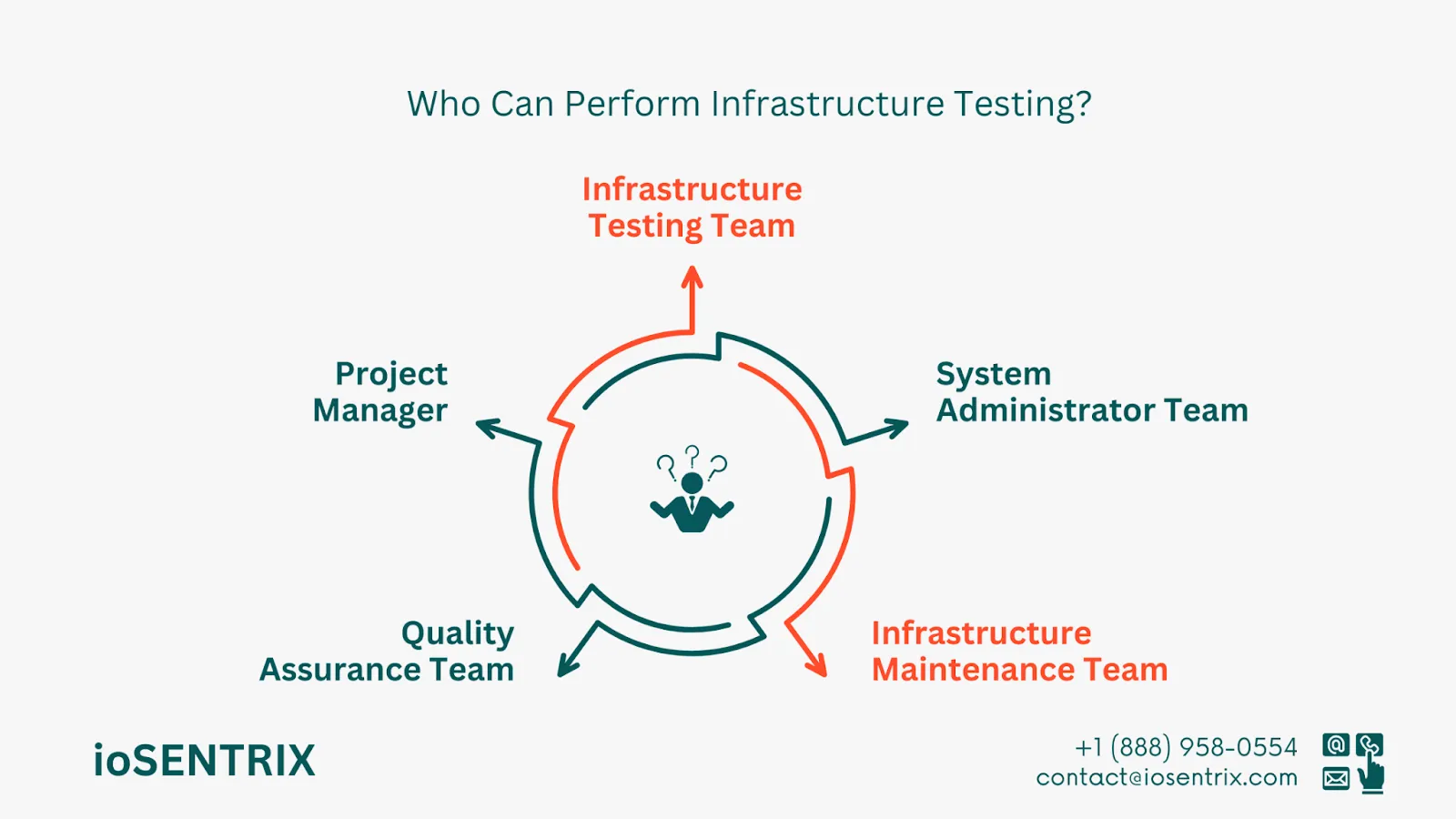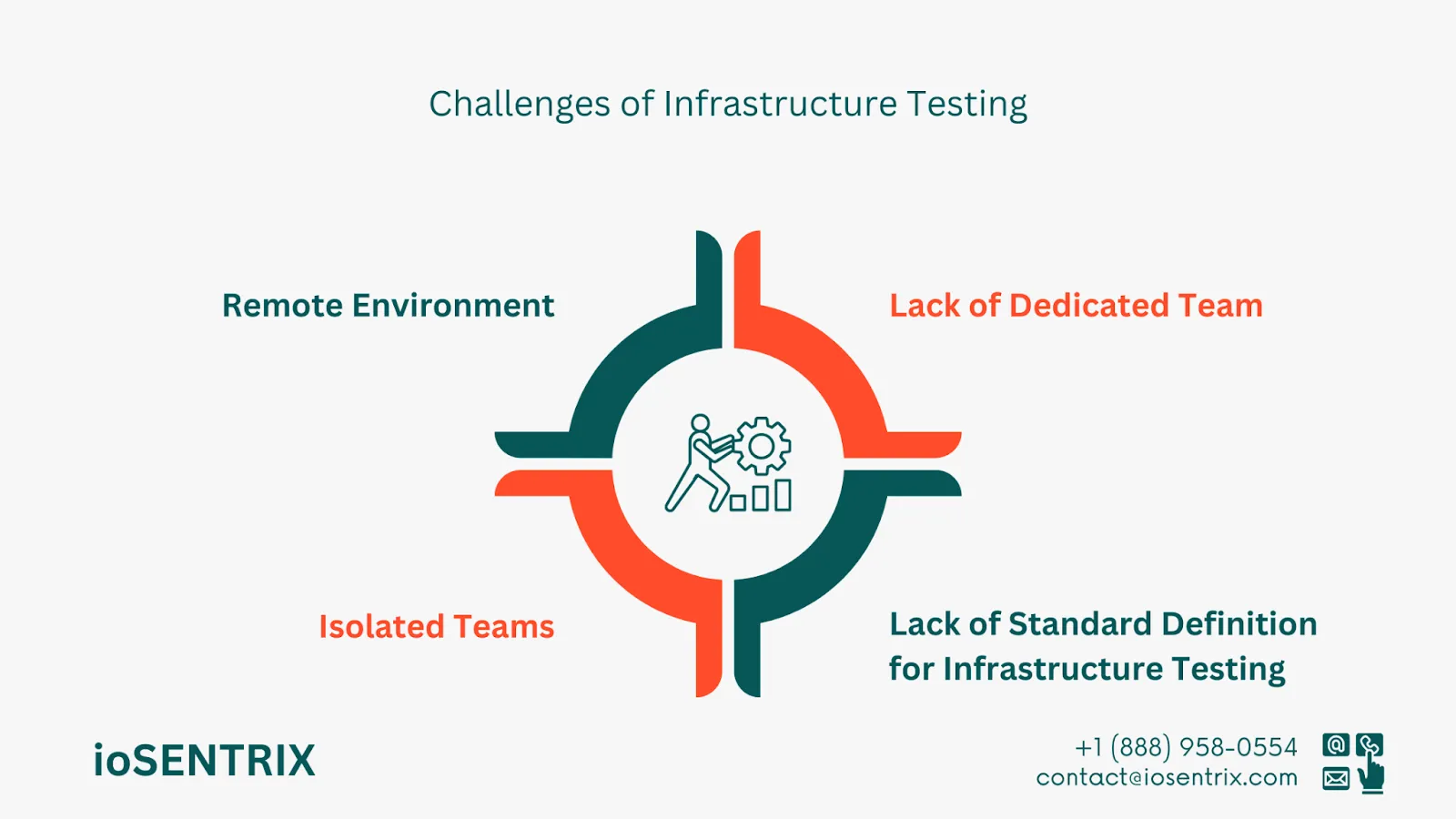
Test infrastructure consists of the hardware, software, and resources required for software application testing. This includes test environments, tools, equipment, data, and other necessary resources to plan, design, execute, and evaluate tests.
An essential aspect of the testing process is having the necessary resources and support for testing activities. This phase is usually created and established prior to testing and is often overseen by a specific team or person.
It includes testing procedures and activities to guarantee quick testing, resulting in a shorter time before release and quicker market entry. This detailed guide on Infrastructure Testing discusses the advantages, difficulties, tools, and methods associated with testing infrastructure.
The IT Infrastructure Ecosystem consists of Operating Systems like Windows, UNIX, Linux, and macOS, as well as Computer Hardware platforms like Dell, IBM, Sun, HP, and Apple. It also includes Internet platforms such as Apache, Cisco, and Microsoft IIS, alongside Data Management and Storage systems like IBM DB2, Oracle, SQL Server, and MySQL.
Enterprise Software Applications including SAP, Oracle, and Microsoft are part of this ecosystem.
“All software needs a system in place to function properly. Infrastructure testing examines the hardware, software, and networks involved. This process ensures that any code reading configuration values from various parts of the IT framework produce the intended results.”
To minimize the chances of problems, testing is conducted to ensure that IT applications and infrastructure can perform well, and be flexible, reliable, available, and scalable. The goal of this testing is to check the infrastructure in various environments to ensure smooth operation.
A test infrastructure is created keeping the following factors in mind:
Businesses invest significant resources in testing their software applications for optimal performance. However, they often overlook the importance of regular testing and maintenance of the infrastructure that supports these applications.
Infrastructure testing reduces the chances of failing hardware or software components. This testing is necessary when a new infrastructure design for the software is created to make sure that it works correctly. Infrastructure failures occur when there is a lack of planned testing on scalable infrastructure. To avoid disruption and last-minute issues, make sure to regularly conduct this testing.
This testing is essential to discover defects that may have been overlooked in previous testing. It is important to assess the software application when there are changes in hardware or software resources to evaluate its efficiency and performance.

A solid understanding of this testing method is necessary to reduce project risks and associated costs.
Servers are essential for various functions, such as website hosting, file management, proxy servers, virtual servers, and supporting physical hardware. The client consists of the operating system, applications, and user settings. Clients utilize the services provided by servers for various functions.
Server/Client components are tested to enhance the efficiency of the infrastructure in a live environment. The testing process involves:
Procedure
All modifications related to servers and clients, such as upgrades and configuration adjustments, have been thoroughly tested on Quality Assurance setups. Additionally, various operating system versions undergo testing before being implemented in production. In case of any issues during production, fallback procedures have been tested in advance to guarantee reliable backup systems.
Data Migration involves data transfer from an old version to a new version, between servers, and to different configurations. Data Migration testing evaluates data migrations across different versions, servers, and new builds. It’s important to test the application to ensure that the migration does not cause any issues.
Procedure
Data migration testing helps identify and address any server-build problems that may arise during the data migration process, ensuring that issues are resolved before deploying the system. This form of testing improves the overall quality and reliability of the product and makes application installation testing smoother in the production environment.
The infrastructure of an application relies heavily on the network for communication between servers, clients, and other networks. The network comprises various components like proxy servers and tools for Internet connectivity.
Procedure
The main goal is to oversee and address network-level challenges such as high resource consumption, server outages, system setup, infrastructure needs for operations, and updates for the Operating System.

A test environment consists of hardware, software, tools, and processes essential for accurate and efficient testing. It provides testers with a suitable workspace equipped with a reliable network, PC, and power supply. This environment is crucial for the successful execution of testing procedures.
The primary goal is to verify the software installation and application configuration settings, select suitable testing tools for test planning and execution, and maintain a consistent flow of test procedures.
Procedure
Quality improvements are noticeable, and productivity rises when using these tools. Test tasks are conducted more efficiently, and documenting the test environment aids new team members in better understanding the processes.
The Test-Driven Development (TDD) framework involves writing test cases before applying the functionality based on requirement documents. Its main goal is to understand the infrastructure resources needed for the project. It helps define and organize the infrastructure for security, operations, and production.
Procedure
The TDD approach is beneficial to enhance the project complexity as it involves testing any infrastructure changes before installation. This method allows for the implementation of various configurations that have already been designed as tests.
The infrastructure-testing team has a strong understanding of testing practices and collaborates closely with the Quality Assurance team. They are skilled in testing IT infrastructure and proficient in developing test cases for this purpose.
The System Administrator team regularly conducts tests on the network infrastructure. They create and record test cases using their knowledge and expertise. Their main task is to make sure that the applications continue to work properly even after any changes in the network.

They are responsible for setting up test environments based on the project's needs, participating in test planning, and maintaining infrastructure environments from the beginning.
The QA team’s main duties include regression tests and participation in integration testing. They carry out testing on various test environments specific to different infrastructure setups.
The role of the project manager includes overseeing the project and its various aspects such as planning, design, and documentation of test cases for testing. The project manager works closely with all teams to ensure coordination and alignment.
Now, let’s examine some of the challenges that companies face when they are trying to implement Infrastructure Testing.
Test environments or resources are located in geographically distant areas, causing test teams to depend on local support groups to handle issues concerning equipment, hardware, software, and networking. This often requires time and can lead to delays, especially when teams are in different time zones.
One of the main challenges of this testing is the team's lack of knowledge. It is important for the team to stay organized and keep track of information such as schedules, plans, coverage, and status reports. A dedicated team is essential for this task.

Many individuals lack awareness of the implementation and processes involved, which can create challenges. Insufficient knowledge and understanding can result in difficulties during implementation and may give rise to new problems that impact the process's stability.
There is a significant distance between the team members’ locations, often resulting in a lack of communication and ineffective collaboration.
It’s crucial for development pipelines to run smoothly without being hindered by slow and inefficient infrastructure testing tools. Teams and organizations need to conduct infrastructure testing to identify and resolve speed-related issues promptly. This is essential to meet the market’s demand for advanced web products.
Businesses invest a significant amount of money in infrastructure, so it’s important to test the software development process to ensure everything runs smoothly. Infrastructure testing becomes especially important when handling database or data migration tasks. Additionally, extra care is needed when there are frequent application updates and infrastructure changes.
Contact here to know how ioSENTRIX helps you achieve full stack assessment with efficient and reliable results.